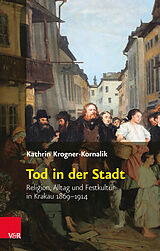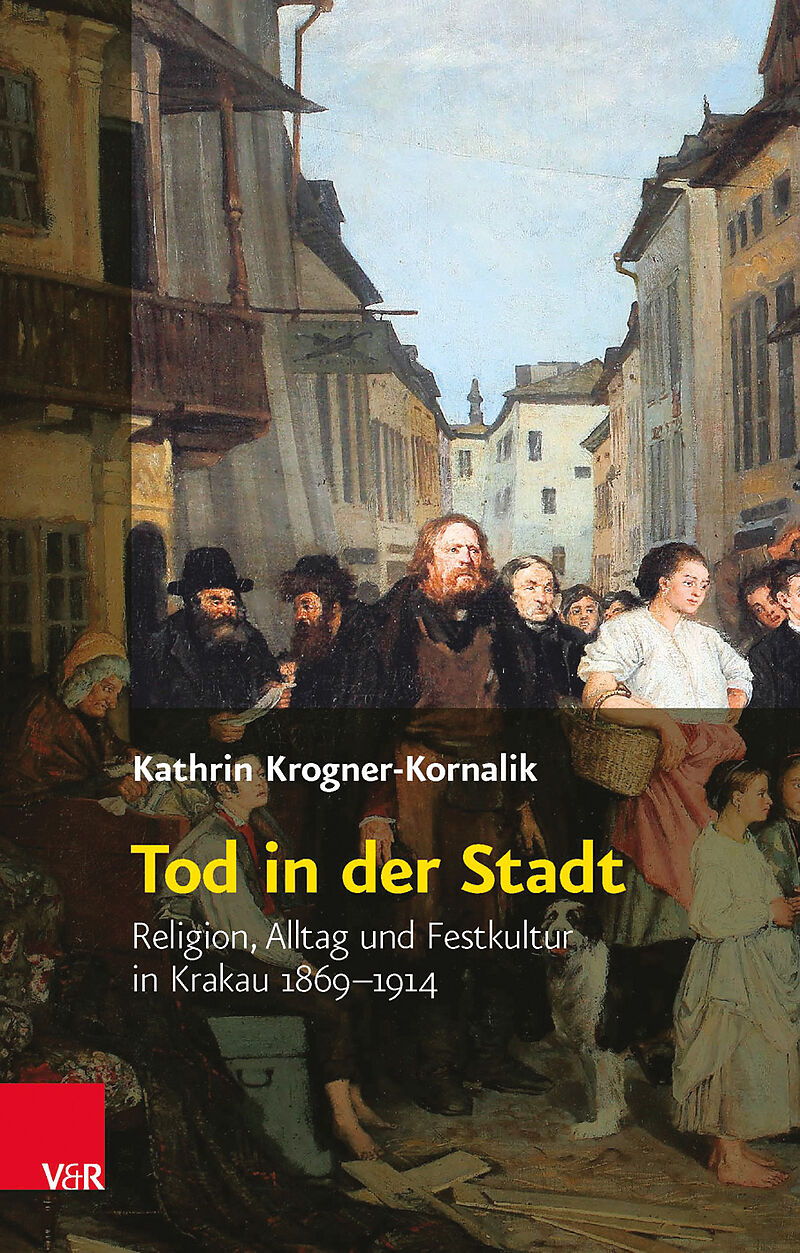Tod in der Stadt
Einband:
Fester Einband
EAN:
9783525310267
Untertitel:
Religion, Alltag und Festkultur in Krakau 18691914
Genre:
Neuzeit bis 1918
Autor:
Kathrin Krogner-Kornalik
Herausgeber:
Vandenhoeck + Ruprecht
Anzahl Seiten:
310
Erscheinungsdatum:
31.05.2015
ISBN:
978-3-525-31026-7
Wandel der Totenkultur in Krakau im 19. Jahrhundert
Das 19. Jahrhundert bedeutete einen Wendepunkt im Umgang mit dem Tod. Während der Tod der Vielen aus dem öffentlichen Raum verschwand, gewann das Gedenken an den Tod von Nationalhelden eine wachsende Bedeutung. Die dabei wirksamen Dynamiken zwischen religiösen und politischen Institutionen sind bisher kaum erforscht. Dies leistet die Studie am Beispiel Krakaus, indem sie eine transkonfessionelle Perspektive einnimmt. Zentrale Aspekte sind der Wandel der Begräbniskultur, die Rationalisierung und Professionalisierung des Umgangs mit dem Tod und die Rolle der Religionsgemeinschaften in diesen Prozessen.
Autorentext
Dr. Kathrin Krogner-Kornalik ist Referentin für Publikation und Öffentlichkeitsarbeit an der Graduiertenschule für Ost- und Südosteuropastudien (LMU München und Universität Regensburg).
Leseprobe
Death remains a mystery. Since death and along with it the question of a life thereafter is at the heart of most religions, it is good starting point for a comparative religious study. During the 19th century both the notion and the handling of death and dying went through significant changes in Europe. It was no longer only the religious communities and close relatives who were responsible for dealing with the dying and the deceased. My book examines the role that religious communities - above all the Catholic Church and the Jewish community - played in these changes. What was the role of religious authorities? How did laypeople react? A case study taking a closer look at 19th-century Cracow shall help to answer these questions. Especially in cities it was common that different religious groups and people with different worldviews lived close to each other. Such a coexistence was typical of the religious landscape in Poland. Nevertheless, comparative studies of religous life in Poland are still rare. One of the cities where Catholics and Jews lived together was Cracow. For both groups, the city had an additional symbolic meaning: Cracow was not only an important religious place, but a reference point for Polish nationalism through the 19th century. Cracow as a site of Polish historical heritage was a significant point for a national pathos which expressed itself among others as a political cult of the dead. Be it the political cult of the dead or death in everyday life, they both have in common that they raise questions both for secular and religious authorities. It is this interplay my book examines thereby analysing the religious content of modernity.

Leider konnten wir für diesen Artikel keine Preise ermitteln ...
billigbuch.ch sucht jetzt für Sie die besten Angebote ...
Die aktuellen Verkaufspreise von 6 Onlineshops werden in Realtime abgefragt.
Sie können das gewünschte Produkt anschliessend direkt beim Anbieter Ihrer Wahl bestellen.
Loading...
Die aktuellen Verkaufspreise von 6 Onlineshops werden in Realtime abgefragt.
Sie können das gewünschte Produkt anschliessend direkt beim Anbieter Ihrer Wahl bestellen.
| # | Onlineshop | Preis CHF | Versand CHF | Total CHF | ||
|---|---|---|---|---|---|---|
| 1 | Seller | 0.00 | 0.00 | 0.00 |
